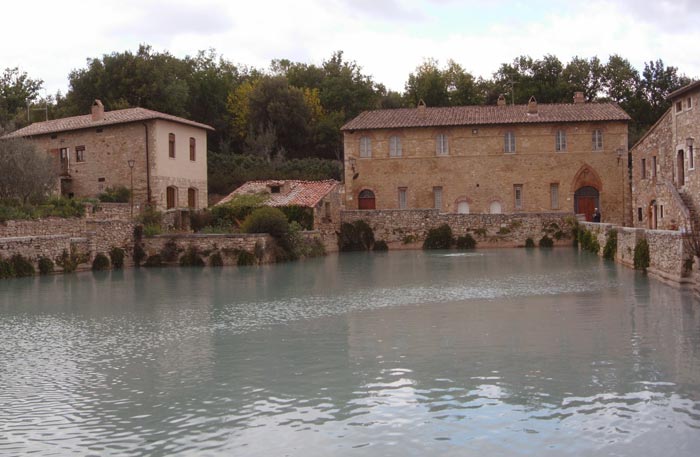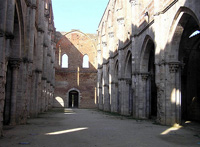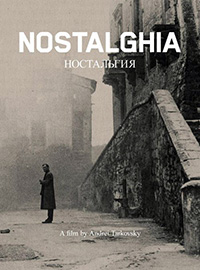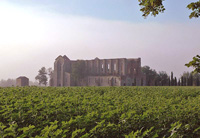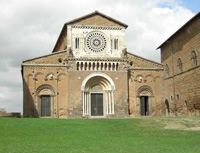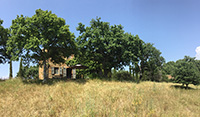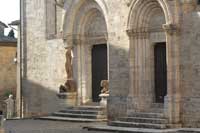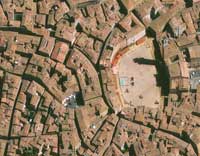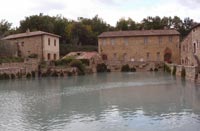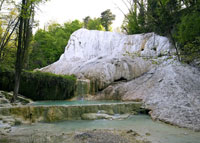Nostalghia (Andrei Tarkovsky, 1983) |
| Nostalghia is a 1983 Soviet/Italian film, directed by Andrei Tarkovsky and starring Oleg Yankovsky, Domiziana Giordano and Erland Josephson. Tarkovsky co-wrote the screenplay with Tonino Guerra.
|
Plot
|
||
| The Russian writer Andrei Gorchakov (Oleg Yankovsky) travels to Italy to research the life of 18th-century Russian composer Pavel Sosnovsky, who lived there and committed suicide after his return to Russia.[3] He and his comely interpreter Eugenia travel to a convent in the Tuscan countryside, to look at frescoes by Piero della Francesca. Andrei decides at the last minute that he does not want to enter.
Back at their hotel Andrei feels displaced and longs to go back to Russia, but unnamed circumstances seem to get in the way. Eugenia is smitten with Andrei and is offended that he will not sleep with her, claiming that she has a better boyfriend waiting for her.
This was Andrei Tarkovsky's first film directed outside of the U.S.S.R. It was to be filmed in Italy with the support of Mosfilm, with most of the dialogue in Italian. When Mosfilm support was withdrawn, Tarkovsky used part of the budget provided by Italian State Television and French film company Gaumont to complete the film in Italy and cut some Russian scenes from the script, while recreating Russian locations for other scenes in Italy.
|
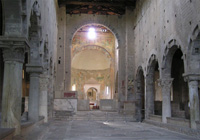 Chiesa di San Pietro, Tuscania, interior
|
|
Nostalghia (Subtitled) - Trailer Andrei Tarkovsky's brooding late masterpiece and a darkly poetic vision of exile was the first of his features to be made outside of Russia, the home to which he would never return. This love and melancholy is embodied in the film by Andrei (Oleg Yankovsky, The Mirror), a Russian intellectual doing research in Italy. Written with frequent Michelangelo Antonioni collaborator Tonino Guerra (L'Avventura), Nostalghia is a mystical and mysterious collision of East and West, shot with the tactile beauty that only Tarkovsky can provide.
|
||
|
||
|
||
|
||
Nostalghia in Bagno Vignoni
|
||
|
||
|
||
|
||
Nostalghia, final Scene in San Galgano
|
||
|
||
The last shot in Nostalghia is not the expression of a spiritual reality in the religious or sacred sense, but one that is part of time and memory. Tarkovsky describes time and memory as spiritual states:
|
||
|
||
Nostalghia in Tuscania
|
||
Nostalghia in Tuscania
|
||
| Andreij Tarkovsky replaced the original fresco in the Basilica di San Pietro with the Piero della Francesca Madonna del Parto. | ||
|
||
La chiesa a San Vittorino, Cittaducale
|
||
|
||
Alcune scene del film Nostalghia, girate nella chiesa di S. Vittorino a Cittaducale.. La chiesa a San Vittorino sommersa nell’acqua. Sotto la chiesa c’è una sorgente naturale e dal pavimento esce acqua che, secondo la tradizione popolare, è miracolosa.
|
||
|
||
Roma, in Piazza del Campidoglio Discurso de Domenico na piazza del Campidoglio, Roma. A piazza del Campidoglio, l'amico "pazzo" del protagonista, Domenico, parla alla gente dalla statua equestre del Marco Aurelio e si toglie la vita, in nome di un ritorno alla semplicità ormai perduta nella vita moderna.
|
||
Discurso de Domenico na piazza del Campidoglio, no filme "Nostalghia", de Andrei Tarkovsky |
||
|
||
| The film won the Prize of the Ecumenical Jury, the prize for best director and the FIPRESCI Prize at the 1983 Cannes Film Festival.[5] Tarkovsky also shared a special prize called Grand Prix du cinéma de creation with Robert Bresson. Soviet authorities prevented the film from winning the Palme d'Or,[6] a fact that hardened Tarkovsky's resolve to never work in the Soviet Union again. | ||
|
||||
This article incorporates material from the Wikipedia article Nostalghia published under the GNU Free Documentation License. |
||||
|
||||
Podere Santa Pia |
Podere Santa Pia, giardino |
San Qurico d'Orcia |
||
 |
||||
Siena, Piazza del Campo |
Florence, Duomo |
Prato |
||
| Siena was the background for Palio, a gripping documentary by female director and Tuscan native Cosima Spender, about the Palio in Siena. | Florence was the decor of Tea with Musolini (Un Tè con Mussolini, Franco Zeffirelli, 1999) | Prato was the venue for Giuseppe Bertolucci's Berlinguer ti voglio Bene, where Roberto Benigni made his debut | ||
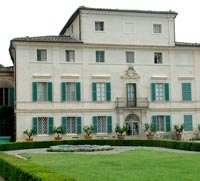 |
||||
Bagno Vignoni |
Bagno San Filippo |
Villa Geggiano |
||
| Bagno Vignoni was the location in which the majority of Andrei Tarkovsky's 1983 film Nostalghia were shot. | Bagno San Filippo was the location in which parts of Alice Rohrwacher's 2014 film Le Meraviglie were shot. | Villa di Geggiano è stato scelto nel corso degli anni per molte produzioni televisive e cinematografiche. Tra i più famosi utilizzo della Villa è stato per Io ballo da sola di Bernardo Bertolucci.
|
||
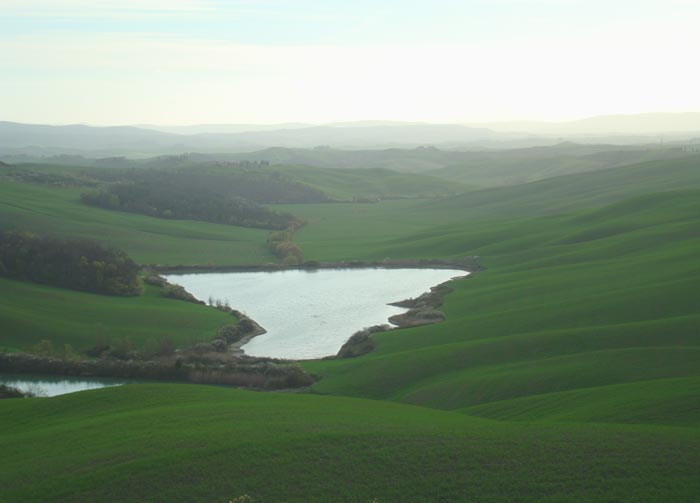 |
||||
Crete Senesi, surroundings of Podere Santa Pia |
||||

